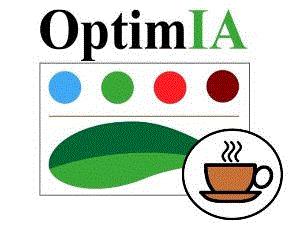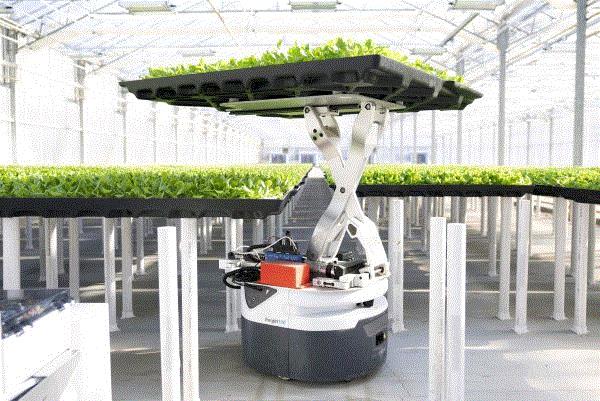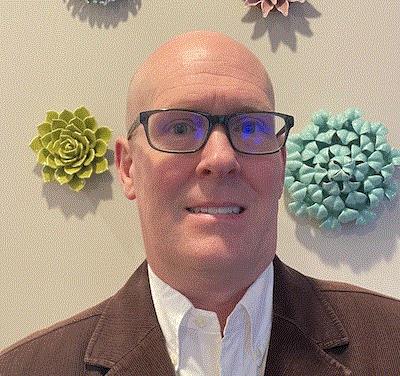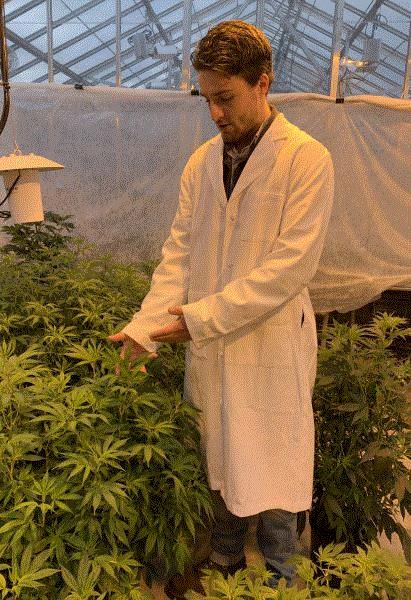Upcoming Indoor Ag Science Café Dates
Planned, funded and organized by the OptimIA (Optimizing Indoor Agriculture) project group, this ongoing series of open discussion forums will be continuing with dates announced through May. Funded as a USDA Specialty Crop Research Initiative, the OptimIA project group has the goals of:
-
helping to integrate indoor farming into the specialty-crop segment;
-
to increase the sustainability and hence profitability of this rapidly emerging sector;
-
and to locally produce leafy greens that have higher quality attributes.
That is all accomplished through critical research and extension activities. Check out their website to learn more about the programs goals and register for the upcoming Science Café dates.

“Introduction to Seed Technologies for Optimizing Crop Performance”
11:00 a.m. Eastern, Tuesday, February 20th
Robert Conrad (Ball Horticultural Company)
“Volatile organic compounds (VOC) issues in indoor vertical farms”
10:00 a.m. Eastern, Tuesday, March 5th
Dr. Shigeharu Shimamura (Hanmo, Japan)
“Faster-than fast: accelerating flowering for the speed breeding of lettuce with far-red radiation”
11:00 a.m. Eastern, Tuesday, April 9th
Dr. Yongran Ji (Wageningen University & Research, the Netherlands)
“Managing sunlight with thin films”
11:00 a.m. Eastern, Tuesday, May 28th
John Morrow (3M)

Hippo Harvest Secures $21M in Funding
If you have been following the recent hurdles and setbacks being faced within the indoor farming realm of CEA, it has been a rather tumultuous few months as companies like Iron Ox and Bowery Farming reduce their staff and AppHarvest and Fifth Season file for bankruptcy. The big question: Which companies’ systems will prove the most successful in this continued race of efficiency and sustainability vs. profitability? Hippo Harvest is betting heavily on robotics and AI.

Similar to other indoor farming systems implemented by competitors, Hippo Harvest is hoping to grow leafy greens in a more efficient and sustainable manner that uses less land and water than traditional farming. Their secret? They’ve enlisted robots as the source of labor in their farms, using them to deliver water and nutrients, collect data from research plots and transfer mature plants to harvest. This latest round of $21M in funding will allow the company to expand their greenhouse capabilities and increase the number of products available to consumers. This is further boosted by an
announcement that Amazon, an investor of Hippo Harvest, has started offering Hippo Harvest spring mix, gourmet lettuce blends and baby romaine in select San Francisco markets.

Dramm on Water: Two Part Series
What can you DO about your D.O. issues? Once you stop laughing, the first in a two-part series on irrigation water “Dramm on Water I: The Benefits of Dissolved Oxygen in Irrigation Water” will be this Wednesday, February 21st at 1:00 p.m. Eastern/12:00 p.m. Central. While too little D.O. can slow plant growth and introduce further crop problems, super-saturated levels of oxygen can improve plant health while advancing plant growth. Hosted by DRAMMwater Design & Solutions Manager, Les Evans, the webinar will cover recommended systems and protocols for optimizing D.O. in irrigation water.
Once you’re a newly appointed expert in D.O. in irrigation water, make sure you also attend the second part in the series, “Dramm on Water II: Common Water Problems and How to Solve Them,” to hear more about common water issues affecting growers and some potential solutions. Free registration for both webinars can be found on the
GrowerTalks Webinars portal, so make sure you tune in to hear all the latest!

Dramm on Water I: The Benefits of Dissolved Oxygen in Irrigation Water
Les Evans, DRAMMwater Design & Solutions Manager
Date: Wednesday, February 21, 2024
Time: 1:00 p.m. Eastern/12:00 p.m. Central

Dramm on Water II: Common Water Problems and How to Solve Them
Kurt Becker, EVP Commercial Products Sales & Marketing
Date: Wednesday, March 13, 2024
Time: 1:00 p.m. Eastern/12:00 p.m. Central

2024 California Spring Trials (CAST)

For anyone in California, or frankly anyone willing to travel distances large or small for plants, the annual California Spring Trials event will be held from March 20th to the 24th this year.
This industry-wide event features a selection of growers, breeders, educators and other plant professionals showing off their newest varieties and introductions.
It has historically been centered around ornamentals, but in recent years several stops have started including displays of the latest leafy greens, herbs and other crops that have been tailored for CEA production (personally, I always have one eye open looking for the next popular edible flower). With six trial stops in Northern California and four in Central California, there will be plenty of opportunities to catch up with your favorite member of the Ball Publishing staff (just look for the bobbleheads!). Register at the CAST 24 website and we look forward to seeing you all there!
Indoor Ag-Con Announces Addition of Cannabis Track
As Indoor Ag-Con approaches its 11th year and is held at the Caesars Forum in Las Vegas from March 11 to 12th, the organizers have announced some changes to this years line up, specifically the inclusion of a new dedicated Cannabis Conference track. Co-located with the National Grocers Association (NGA) Show again this year and featuring 80+ speakers over the two days, the cannabis-centric track will include sessions:
-
“Past, Present & Future: The State of the Evolving Cannabis Landscape,”
-
“Elevate Your Cannabis Grow: Finding the Right Vertical Racking Systems for Optimal Efficiency,” and
-
“Bridging The Gap: Integrating Cannabis Cultivation with Traditional Horticulture for Operation Excellence.”
Early bird
registration ends on Friday, February 23, so make sure you register in advance if you want to attend and hear the latest in cannabis cultivation.
Development of a Hydroponic Growing Protocol for Vegetative Strawberry Production
Published last week in HortScience, researchers with the USDA ARS have released their findings on development of a hydroponic-based growing system optimized for strawberry production that could provide equivalent growth to substrate-based production. Hydroponic systems are valuable in root data studies as they minimize or remove the tedious task of removing root substrates, as anyone who has done large-scale rooting studies can attest (rockwool was always the toughest for me).
Deep water culture (DWC) refers to the practice of growing plants so that their root systems are suspended in oxygenated, nutrient-rich water, and is a common hydroponic growing method. The authors concluded that among the multiple treatments tested (perlite, sand, DWC, and a peat-based soilless substrate) that DWC provided equivalent plant growth with the added benefit described above.
Researchers did note that pH of the DWC nutrient solution decreased when a modified strawberry nutrient solution was applied. Addition of buffering agents was sufficient to counter root acidification but was enough for authors to note that the additional cost makes the procedure prohibitive for most production and should instead be saved for small-scale research applications where clean roots are required.

Student Profile: Mitch Westmoreland, USU

For the second installment of my series profiling CEA students, say hello to F. Mitchell Westmoreland of Utah State University as he tells us about CEA medical cannabis production, his research goals and his recommendations for best outdoor activities in Utah by season. As a reminder, the objective is to not only learn about the research but also to have a chance to get to know the student behind the work, so we encourage you to reach out to Mitch directly if you have further questions. More information can also be found by visiting the lab website. Registration for their 3rd installment of the online cannabis cultivation course will be opening within the next few months.
1. Before we begin, can you tell all your (soon to be) fans who you are? Bonus points for all the things that make you interesting outside of your work.
I am just a guy who loves to grow plants. Outside of work, I enjoy doing a lot of the same things I do at work including tinkering with environmental sensors and electronics. I really love building things and learning new skills – last year I built a chicken coop from scratch (bad pun intended) and I have slowly been crocheting a blanket over the past two years. At this rate, I should be finished before Halley’s comet makes its next appearance in 2061.
2. Can you tell us a bit about your research? Skip the Intro and Materials & Methods sections and just give us the conclusions.

My research focuses on plant-environment interactions of high-value crops like medical cannabis, studying light quality and quantity, nutrition, CO2 and temperature influence on plant growth, development, and secondary metabolism in controlled environments. I am fortunate to have access to world-class infrastructure, including a 10-chamber canopy gas exchange system that offers a unique insight into the physiology of whole-plant communities. My goal is to advance fundamental knowledge of plant physiology and provide evidence-based approaches to improve the sustainability and efficiency of medical cannabis cultivation and CEA in general.
3. While most are familiar with the elevator pitch, I find that I get more mileage out of my cocktail pitch, aka how would you describe a simplified version of what you do to someone new at a cocktail party?
I usually start by saying that I’m getting a PhD in weed, but it’s diet weed (aka low-THC cannabis or ‘hemp’). I study how environmental factors like light or temperature influence flower yield, cannabinoids and terpenes (the smelly stuff). My goal is to improve the productivity, efficiency and sustainability of medical cannabis, and bring some science to a plant that has been cultivated underground for too long. One of the most satisfying things of my Ph.D. is watching people become motivated to learn the principles of plant physiology because of their interest in cannabis, proving it to be an excellent gateway to CEA.
4. If you could recommend anything to a younger version of yourself, or any new student for that matter, what would it be?
Find something you’re interested in. Work hard. Be willing to learn. Don’t be afraid to ask for help. And for Pete’s sake, have some fun. For new students who are interested in science, I recommend reading “Letters to a Young Scientist” by E.O. Wilson. The book is full of inspiration for emerging scientists. My favorite line is: “Very often ambition and entrepreneurial drive, in combination, beat brilliance.”
5. What’s next for you? How about if you could do anything in the world?
In the short term, I plan to continue my research on cannabis and work to establish Utah as a global hub for medical cannabis research. At the end of the day, I want to continue growing plants, doing impactful research, and sharing my research with the hope of inspiring others to understand the principles of plant physiology. If I could do anything in the world, I would do something out of this world: join a long-duration space flight to Mars so I could be among the first humans to grow plants on another planet!
6. Finally and for my own benefit, what’s your favorite outdoor activity? (In honor of my close friend Frank, “these hands were made for typing, not being outdoors” is also an acceptable answer.)
The spectacular scenery in my home state of Utah offers plenty of opportunities for outdoor activities. In the summer, I enjoy kayaking/paddleboarding, camping, mountain biking, and watching my chickens and dogs take turns chasing each other. In the winter, I enjoy skiing and sledding, but I am mostly waiting for summer. The best part about living in Utah is the ability to ski world-class snow in the morning and be in the red-rock desert to mountain bike world-class trails in the afternoon.
Student Profile Update: Samson Humphrey, NCSU
For anyone who read last weeks profile of Samson Humphrey of NCSU, we wanted to give the update that he has successfully won his department’s cornbread competition. Congratulations Sam!
Stay curious, ask questions and let me know how it goes at scampbell@ballpublishing.com.

Dr. Sean Campbell
Editor-at-Large
Inside Grower
This email received by 30,713 loyal readers!
Interested in advertising in Inside Grower? Contact Paul Black or Kim Brown and they'll show you how easy, effective and affordable it is.